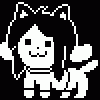기글 하드웨어 디지털 카메라 포럼

네셔널 지오그래픽 사진 작가들의 촬영팁
[ ( ) 안의 말은 제가 적은 겁니다 ;;]
[98년도 이야기라서 ;; 요즘 카메라 기술의 발전때문에 맞지 않는 말들은 삭제 했습니다.]
*Bob Krist (“Danish Light,” July/August 1998)
- Pay attention to the quality of light and not just the subject.
좋은 빛을 찍는 겁니다. 좋은 대상물이 아니예요.
(100번들어 100번 옳은 말이지요)
- Shoot in warm light, around dawn or dusk.
해가 있을 때 찍으세요. 새벽부터 해질녘까지 입니다.
- Always take a look at the edges of the view field.
언제나 시야의 가장자리(끝)를 주목하세요.
- Shoot plenty of film.
셔터누르는 걸 아끼지 마세요.
(가장 중요한 말인것 같네요)
- Include a dominant element in the image.
내가 담고자 하는 것의 제일 중요한 부분을 빠뜨리지 마세요.
- Always carry a polarizing filter and tripod with you.
편광필터와 삼각대를 챙기세요.
*Gail Mooney (“America’s Hometown,” July/August 1998)
- Be an observer. Be patient and watch life as it happens. then be ready to capture the right moments as they present themselves.
삶을 관찰하세요. 기다리며 지켜보세요. 그리고 있는 그대로를 사진으로 담으세요.
(진짜 명언이네요 ㅠㅠ...)
- Don’t bog yourself down with all the latest gadgets. The real art is being able to communicate and to understand what the message is.
최신의 장비로 당신 자신을 엉망으로 만들지 마세요. 진정한 사진(예술)은 그 것이 말하는 것을 알아챌 수 있습니다.
(최신의 장비로 당신 자신을 엉망으로 만들고 있는 1人 ....;; 아아아앜....)
- A lot of amateurs make the same mistakes: not thinking about what they’re shooting; not considering the light; staying on the outside and not getting in where the action is; using a flash in a big interior where it won’t do any good.
많은 아마추어는 공통된 실수를 하곤 합니다. 뭘 찍고 있는지 생각치 않고, 빛을 무시하며, 먼가 사진찍기 좋은 것에서 멀리 있으며, 아주 큰 실내에서 플래쉬를 도움도 안 되는 것을 사용합니다.
*Jim Richardson (“Sojourn on a Southern Highway,” November/December 1998)
- Shoot more pictures and throw away the bad ones. You’ll try more things: angles, exposures, and so on. The one way to get the photo right is to try lots of different approaches.
많이 찍고 그중에서 고르세요. 구도와 노출값등을 바꾸어 여러 가지를 시도하세요. 좋은 사진을 찍는 방법은 같은 걸 다른 각도로 접근하는 것입니다.
(꽤 노가다이긴 합니다만 이방법이 의외로 좋더군요 ^^)
- The human eye sees differently than a camera, so try to imagine how that image will look in a photograph.
우리가 보는대로 사진이 만들어지는 것이 아니니 사진으로 찍혔을 때를 머릿속으로 그리세요.
- Don’t just point the camera at the scene. Try to create a sense of depth and put things in the image for scale.
눈에 보이는대로 찍는 것만 하지말고 풍경을 사진에 적절하게 늘어놓는 자기만의 감을 만드세요.
- Get up early and stay out late.
일찍 나가서 늦게 들어오세요.
(저같이 저질 체력에게는 불가능 늅늅...)
- Force yourself to “think little” and to “think big” by doing close-ups and long shots. You’ll gain a lot in the process of looking for details and grand-scale images.
작은 피사체는 "작게 생각하고" 넓은 풍경은 "크게 생각하세요"
- Meet the people you are going to photograph and establish a rapport before you begin shooting.
사진찍을 사람과 먼저 친해지세요.
(진짜 진리 지요 ~)
- Use wide-angle lenses for close-ups, because it’s easier to create a sense of perspective.
다가가서 찍을 때는 더 광각의 렌즈를 쓰세요. 원근감을 만들기가 더 쉽습니다.
- Carry a compact folding reflector to illuminate objects in the foreground.
접는 반사판을 가지고 대상물의 앞에 낮은 곳에 두면 빛이 더 삽니다.
*Mark Thiessen (“Garden of Dreams,” January/February 1998)
- Try to get close enough to your subject to capture the important details.
한발 더 다가가세요. 아니 뚜벅뚜벅 걸어가세요. 찍고 싶은 구도에서 더 다가가세요.
- Take a tripod, which allows you to use slower speeds and longer lenses during twilight.
삼각대를 쓰세요, 더 낮은 스피드와 망원렌즈를 쓸 수 있도록
*Bill Luster (“Brown County,” July/August 1997)
- Be as basic as you can in your equipment. Try to use just a camera, a couple of lenses, and not much more. It keeps you thinking about what you’re shooting.
단촐(!)하게 꾸려서 다니세요. 사진기 한개에 렌즈 두어 알에 몇가지 악세사리만 챙기세요. 촬영에 몰두할수 있게 도와줄거예요.
(진리 진리 찬양하라 ~ 저질체력에게 축복을 ~)
- Try to include people in every picture you shoot.
사람이 들어가야 사진이 재밌어 집니다.
(진짜 공감 400% ~)
- Make sure you’ve got film in the camera, set the ISO dial
필름은 넉넉하게 갖고 다니시고 필름감도를 맞추어 찍는 걸 잊지말아라
(현재의 상황으로 해석하자면 메모리 카드의 용량은 항상 넉넉하게 비워두고 감도를 맞춰 직는걸 잊지 말아라)
- When shooting horses, putting pebbles in an empty film canister and shaking it really gets the animals’ attention. They think it’s food so they respond to it.
말들을 찍을때는 작은 자갈 몇개를 빈 필름통에 넣어서 흔들면 관심을 가질겁니다. 먹인 줄 안데요.


'사진기 한개에 렌즈 두어 알에 몇가지 악세사리' ....단촐하다니 ?! 뭐 내셔널 작가정도면 저게 단촐한게 맞겠지만요 [....]
전 사진기 한개에 렌즈 두개도 들고다니기 힘들어요 [...]










다만 실천을 안해서.. ;ㅁ;